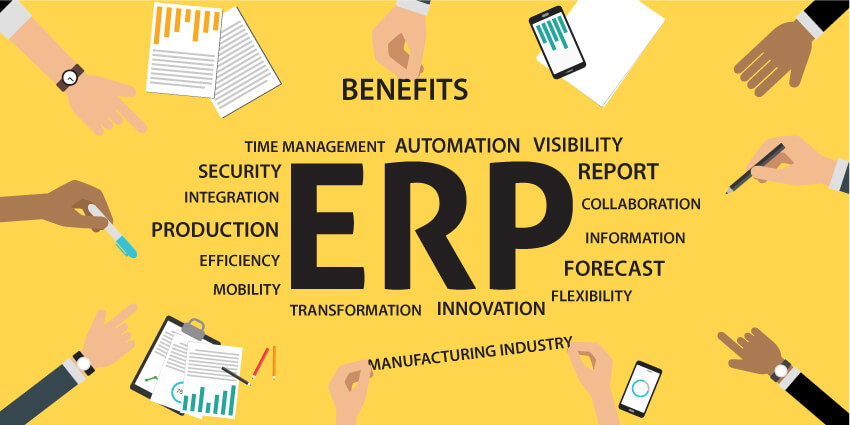More than ever, companies face intense pressure to innovate, keep up with the competition and operate at high-performance levels. High-performing companies that can effectively leverage digital business transformation into today’s market will thrive, while laggards will cease to exist.
What is the business transformation process?
Today’s business leaders realize that to meet the challenges and opportunities presented by ongoing disruptions, they must re-evaluate and transform business processes. While the amount of change required within an organization varies widely, most companies believe today’s business transformation needs go far beyond tactical and operational improvements.
A successful transformation often requires a fundamental change in the company’s strategy, core operating structures, and, in some cases, the underlying business model. The following chart illustrates the typical ranges of business transformation and how transformation initiatives to scale in size and complexity.
As a result, the very definition of business transformation must evolve to reflect the growing scale of change and the need for ongoing evolution rather than one-off arrangements.
The business transformation process is not a one-time job, nor is it just a process. We define business transformation as: “Driving competitive advantage through the continuous implementation of strategic change and performance improvement in an organization, embracing people, processes and technology.”
When Do We Need Business Transformation?
Even before the pandemic, the average lifespan of an S&P 500 company dropped from an average age of over 36 in the 1970s to just under 20. And now, analysts predict that the lifespan of companies will only shrink as the pace and level of disruption increase exponentially. Businesses today must rethink not only how to reach and serve their customers, but also how they operate effectively in a business environment everywhere.
Furthermore, we are seeing an unprecedented shift toward mass digitization. Transformative technologies such as artificial intelligence (AI), machine learning (ML), natural language processing (NLP), robotic process automation (RPA), cloud computing, and robust collaboration platforms enable businesses to transform their business models and operate virtually.
Overall, these disruptions are increasing the pace of change and putting pressure on business strategies, people, processes, and technology. Perhaps just as important, these disruptions allow new and existing competitors to change the game, which could put companies at a significant competitive disadvantage and risk becoming irrelevant.
But you don’t have to sit down and play defense. There is a golden opportunity for bold and forward-thinking organizations to take advantage of these new realities and reposition themselves for a competitive edge in the market.
Signs that a company needs a process transformation
To effectively address the threat of disruption, companies must proactively challenge current regulations, drive innovation, and embrace change in a way that enables them to respond quickly to changing market dynamics.
However, despite the desire to transform, companies struggle to do so. Below is just one example of some of the key challenges businesses face when they have a critical need for business process transformation:
- Lack of alignment of leadership with vision and strategy, exacerbated by rapidly changing market conditions.
- Ineffective efforts to acquire, aggregate, and extract key information from reams of data to understand market realities and make informed decisions. Slow to modernize business operations and enable digital execution.
- Obstacles and silos hinder innovation and market introduction of new products, services, and solutions. Uncertainty about how to deal with the massive disruption of organization, people, and culture.
- Not fully realizing value through end-to-end strategy alignment and execution.
All these challenges are significant in themselves. However, one of the biggest underlying problems many organizations face today, and contributing to many of these challenges, is the lack of business agility across the organization. But what does business agility mean?
We define business agility as: “The will and the ability to respond in an organizational way to changing business dynamics in a flexible, adaptive, and rapid way”.
To keep up with the ever-increasing pace of change and ensure that your organization stays one step (or many steps) ahead of the competition, it’s critical that you have this capability. You don’t just need isolated agility in certain parts of the business, like IT.
Today you need it in every part of the business, from strategic planning to product development, operations, information technology, and corporate culture.
So how do you build an agile company that can accommodate disruption, rapidly evolve its business model, rapidly implement new business capabilities, enable a culture of change, and sustains results over time?
Business transformation process drivers
You will notice that in the relationship model there are many interdependencies between the business transformation drivers that you need to consider throughout the process, with several dynamics emerging immediately.
For example, a compelling vision drives the overall transformation, but it must be based on understanding customer, industry, and business realities. Technology plays a vital role in inspiring your vision and enabling new business capabilities.
Processes are critical to defining your company’s performance and value, guiding your organization’s design and resource requirements. Addressing these complexities requires a comprehensive approach to business transformation. Based on the ever-increasing pace of change, we can no longer view business transformation as a periodic or one-time event.
You need an agile approach to business transformation by building agility across your organization so you can respond in real-time to changing business dynamics and quickly rotate to keep up with the competition.
What are the main stages of the business transformation process?
If business transformation is the new norm and an ongoing journey, what is it, and what essential transformation steps do you need to do it right? We’ve narrowed down the successful transformation to six key steps, which we’ll cover one by one in this blog series.
It is important to note that these steps are very dynamic and do not involve a sequential or waterfall approach to the transformation process. When responding to the ever-changing market changes and upheavals, you need to integrate multiple ongoing activities within each of these six essential aspects of agile business transformation.
Customer and Business Insights:
Gain real-time customer and business insights to improve decision-making and drive business.
Understanding the impact of changing customer expectations requires leveraging new technology to gain a 360-degree view of business performance.
Integrated platforms for customer data, AI, experience management platforms, and predictive analytics tools have created previously unavailable opportunities to aggregate data. This allows you to get a comprehensive view of your organization and facilitate informed decision-making.
Vision and strategy:
Adapt to the ever-changing market and chart a new course forward, which is both compelling and challenging for the organization.
Accept disruptions and learn to mobilize quickly, changing business strategies in real-time to gain a competitive advantage. Rather than developing a strategy in isolation, successful business transformation processes involve different perspectives from stakeholders, especially employees. The goal is not constant disruption across the business, of course, but to create agility within business processes to verify assumptions and proactively adapt.
Operational Model:
Establish a model for configuring internal operations and building agile, high-performance business capabilities.
A well-designed operational model is both the method and the result of creating a transformation plan. This design process consists of three integral phases:
Identify critical business capabilities and map them to pillar-enabled value streams across the business, including people, processes, information, and technology.
Design processes, models, technology, and data while experimenting with solutions
Develop the final roadmap that prioritizes and details how you will align people, processes, and technology with the solutions you will design together.
Agile value delivery:
delivery of commercial and technological solutions in an agile and rapid way. In business transformation, it is critical that the delivery of new capabilities and products focus primarily on creating value.
To keep up with your competitors and gain valuable customer feedback, adopt lean and agile practices, and deliver quickly and iteratively. Focusing on perfection can be detrimental to the growth of your business. Instead, focus first on achieving alignment between business stakeholders to enable agile delivery of value, then work towards achieving those minimum vital products (MVPs).
People and Culture:
To inspire people and foster a culture of agility. Cultural transformation is essential for any type of business transformation. For business operations to thrive, streamlining workflows and building clear communication channels with built-in flexibility, inclusiveness, and ease of interaction is essential for enabling your team to deliver value internally and externally.
Additionally, a culture of agility fosters a change-ready organization that has moved from managing change to enabling change. Leaders must be advocates of cultural change, actively shaping the behaviors and mindsets needed to successfully transform a business.
Business Program Management:
Accelerate value realization by aligning portfolios with strategy, funding streams of value, and prioritizing initiatives and projects for quick delivery. Turning strategy into real business value has become more difficult, but more critical than ever. The sheer pace of change requires PMOs to step up and nimbly lead transformation initiatives.
Successful companies base their business transformations on evolving business program management from a support function to a core business capability focused on end-to-end strategy execution and value realization.
In the following blogs, you will learn more about the six key aspects of business transformation and the associated success factors to ensure your business is ready for disruption. In the next few posts, we’ll explore the role each step plays in enabling business agility across your organization. But first, what are some of the benefits associated with business transformation projects?
Advantages of a process transformation
Customer experience
Gaining a 360-degree view of detailed customer information allows you to improve the customer experience by providing innovative products and services that respond to ever-changing needs. With agile value delivery at the heart of your processes, data-driven and digitally enabled enhancements to give your teams the agility and resources to develop and drive more effective go-to-market strategies. Continuous feedback allows for constant iteration and improvement, leading to results that make a difference both internally and externally. Meet and exceed expectations, outperform the competition, and gain market share by keeping solid knowledge at the heart of your business strategy.
Internal Workforce experience
When you work to foster a culture of agility that radiates from leadership to every individual in your organization, you will improve business performance. High-performance, collaborative, and connected teams enjoy flexibility and ease of access across the enterprise, enabling distributed innovation and decision-making. With organizational transformation underway, greater scalability, greater productivity, deeper working relationships, and better employee retention and acquisition are just some of the beneficial impacts that people and the company will suffer.
Operational efficiency
There are many types of business transformation and many reasons to undertake it. While maintaining a competitive edge in the face of constant disruption is a priority for many, increasing efficiency and reducing costs are the primary benefits of embarking on a business transformation initiative. With a 360-degree view of customer and business insights, you can quickly discover digital transformation opportunities. You need to automate key functions across departments incrementally so that you and your team have time to discover which functions create the most value for your organization.
By constantly monitoring the market, promoting an agile culture, re-evaluating your vision, and improving business capabilities, you will see incremental increases in value over time.
An example of a successful transformation
Our tech client was facing one of the key challenges that pointed to the need for business transformation: leadership misalignment. This mismatch prevented them from achieving their business goals, contributing to high employee turnover. Leadership agreed on at least one thing: they needed a cultural transformation to improve business performance.
First, we traced the tech firm’s current problems to several key roadblocks. In addition to leadership mismatch, our client used ineffective communication channels throughout the company, which drained trust and led to poor integration between corporate culture and business strategy.
With clearly defined obstacles, we collaborate with our clients to create an operational model that maps a clear path to solutions. These solutions included: a core values review followed by an implementation plan for core values alignment starting with leadership, a new business strategy alignment plan, corporate-wide communication process restructuring, and new performance management processes, including a structured program of professional development and incentivized behaviors. Models
Our client was motivated to perform this initial phase of his cultural transformation. After completing the roadmap route outlined above, the tech company conducted an enterprise-wide survey, and the initial results were very encouraging:
- 62% improvement in organizational communications, with the greatest improvements found in the connection between manager and employee
- 85% of employees rated the implementation of the new core values as excellent in terms of supporting cultural transformation.
- 60% improvement in leadership alignment in strategic business decisions
- 53% increase in overall perceived trust within the organization.
As the customer continues to follow and repeat the new operating model, the alignment of vision and strategy, and the employee insights gained along the way, they continue to see improvements in the realization of value.
Combined with regular agile business training, the company’s ongoing business transformation is already leading to higher morale, stronger employee engagement, and lower turnover rates. Leadership is now deeply aligned with a vision that includes transformation initiatives as key to achieving its long-term business goals.
Conclusion
Organizations undertaking business transformations know this better than anyone else: a successful transformation requires changing not only our systems and processes but also our behaviors.
To do this effectively, we must first change our minds. This is one of the biggest challenges companies face in a constantly disintegrating market, but it is also an invitation. When you accept the invitation to rethink your goals and to drive competitive advantage incrementally and over time, you model an agile mindset that can alter your company’s strategy, culture, operational structures, and even your underlying business model.
With a willingness to embrace business agility and adaptability, these changes don’t have to be scary. Yes, it is hard work and a continuous improvement process. But what good thing isn’t it? In today’s marketplace, successful organizations don’t wait for the transformation to happen, they deliver it.





